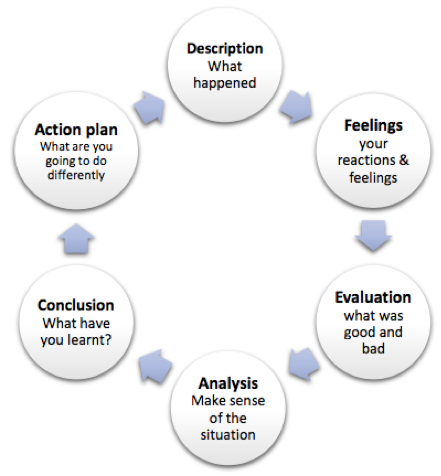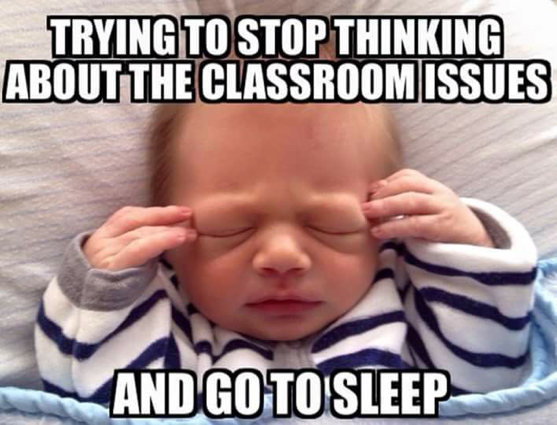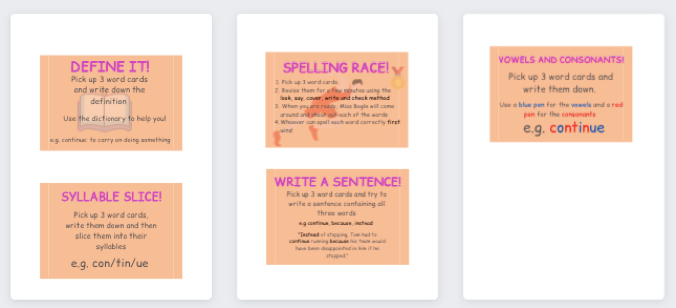‘Shaking up’ the Classroom
Overcoming the challenge of differentiation in the classroom.

According to Carol Ann Tomlinson, differentiation means
“shaking up what goes on in the classroom” to give students “multiple options for… making sense of ideas and expressing what they learn” (Tomlinson, 1)
For me, ‘shaking up’ the classroom proved to be the most challenging aspect of my work placement. It is explained in more detail in the video below:
Sounds relatively simple- right? Wrong. In this article, I use Gibb’s reflective model to explore the challenges I have faced in trying to implement differentiated learning in the classroom.

Description:
In my placement as a literacy support coordinator in Castlederg High School, I am working with a lot of SEN pupils, whose reading and writing ages range between five and thirteen. Thus, meeting the needs of all the students has proved to be quite a challenge. To provide some context, I always assessed the spelling ability of the students after every session. I tried to ensure the list of words I chose presented a level of difficulty appropriate for the students. However, in my third week, I noticed that whilst some pupils were excelling, others were struggling.
Feelings:
Despite knowing that having mixed-ability groups meant that there was going to be some students who struggle more than others, I was still shocked at the range of ability being displayed. This left me feeling quite overwhelmed. Ensuring that every student’s needs were being met felt impossible to balance with my other commitments. I thought it would mean a lot more planning, which I worried I just didn’t have time for. I also felt torn as although I wanted to spend time helping the struggling students, I didn’t want this to mean neglecting the pupils who were excelling whilst I was doing so.

In 2011, nearly 1,600 teachers were accused of displaying a poor standard of teaching in the UK (Lovelys, The Times). What if I was just another statistic to be added to that number? Anxious that I would fail the students, I began researching to find a solution to my problem.
Evaluation:
What I found most challenging about promoting differentiated learning in my mixed ability groups was the complete and utter lack of a definitive answer on how to do this. There has never been one right ‘way’ to teach, however, before I began my research, I believed there was. Looking back, I should not have tackled this challenge with such beliefs and strong feelings of fear and anxiety, as I know now that everyone who embarks on a teaching career initially experiences similar difficulties.
However, I am proud of the way I consulted academic literature in the field to help me tackle the challenge. The McClay library indeed did become my sanctuary for several days. I am also pleased on how I reflected upon my experience with the students, and how in doing this I realised that they were not responding to the traditional spelling test format. After discussing my findings with my supervisor in the school, I began to formulate a new spelling assessment system that I believed would cater to all of their needs.
I am proud of the result of my endeavours! I was inspired by John Shindler and his research on the benefits of competition in the classroom. In his book, Transformative Classroom Management, he states that the extrinsic motivation of winning needs to be a “reminder of something of real and intrinsic value” (Shindler, 120) like learning and making the material accessible to all students. Therefore, I wanted to create a game that helped me achieve my objectives in helping the students improve their spelling. Below is an image of the final product which I created on Canva:

Analysis:
Each week I would print out thirty words and for each spelling strategy card I would pick up three of these words for the students to spell. The students then could use the strategy on the card to help them spell the word if they were struggling. I believe this was as successful because it allowed me to scaffold information for students at all levels of ability. According to Carol Anne Tomlinson, scaffolding is a really good way of introducing differentiated learning into the classroom (Tomlinson, 45).
Conclusion:
I have learnt that by deploying strategies, such as my spelling game, learning becomes “student-led” as opposed to simply asking the students to spell words and then correct them. It allows for them to think of different ways to approach a word they are not quite sure of, giving them “direct ownership of the learning experience” (Marvell, 547) and thus increasing the likelihood that all students’ needs are being catered for. I have also learned that my feelings of overwhelm were not necessary as I know now that we all have different ways of approaching the classroom. I know that no one is perfect and all I can do is my best, and by overcoming this challenge and the feelings of inadequacy it produced, I have learnt that I am more than enough.
Action Plan:
I plan to implement the lessons I have learnt from this experience in my future teaching practice. I know that the PGCE course I plan to complete after my undergraduate studies will be taxing and thus the awareness I have gained of when and more importantly why I get overwhelmed will be hugely beneficial for the placements I will be undertaking. Differentiated learning is an expansive and complex area of education, and so I hope to further my knowledge of the topic by reading and asking questions to keep continually improving my practice. I want to experiment with more ways of scaffolding information for students to find what best works for them and me. I am dedicating myself to ‘shaking up’ the old ways of teaching to create a more interesting and inclusive classroom.
References:
Education Week. Differentiating Instruction: It’s Not as Hard as You Think. YouTube, 2018, Available at: https://www.youtube.com/watch?v=h7-D3gi2lL8 (Accessed 9th March 2022)
Kalim, A. “Differentiated Teaching and Learning”. LinkedIn, 2020, Available at: https://www.linkedin.com/pulse/differentiated-teaching-learning-ayesha-kalim-1e/ (Accessed: 13th March).
Lovelys, K. Schools Sack Four Incompetent Teachers a Week. The Times, 2011, available at: https://www.thetimes.co.uk/article/schools-sack-four-incompetent-teachers-a-week-8962msxtbjg (Accessed 12th March 2022).
Marvell, A., Simm, D., Schaaf, R. & Harper, R. Students as scholars: evaluating student-led learning and teaching during fieldwork. Journal of Geography in Higher Education. 2013. 37(4), 547-566. Available at: https://www.tandfonline.com/doi/full/10.1080/03098265.2013.811638 (Accessed: 14th March).
Shindler, J. Transformative Classroom Management: Positive Strategies to Engage All Students and Promote a Psychology of Success. Wiley, 2009.
Tomlinson, C. “The Learning Environment in a Differentiated Classroom”. How to Differentiate Instruction in Academically Diverse Classrooms. ASCD, 2017, pp. 43-53.
Tomlinson, C. “What Differentiated Instruction Is- And Isn’t”. How to Differentiate Instruction in Academically Diverse Classrooms. ASCD, 2017, pp. 1-11.
University of Cumbria Academic Services & Retention Team. Gibbs’ reflective cycle. 2016, Available at:
https://my.cumbria.ac.uk/media/MyCumbria/Documents/ReflectiveCycleGibbs.pdf (Accessed: 10th March 2022).
Adapting Learning
You May Also Like

Patience is a Virtue
26 March 2022
Improvising like jazz
27 March 2022
